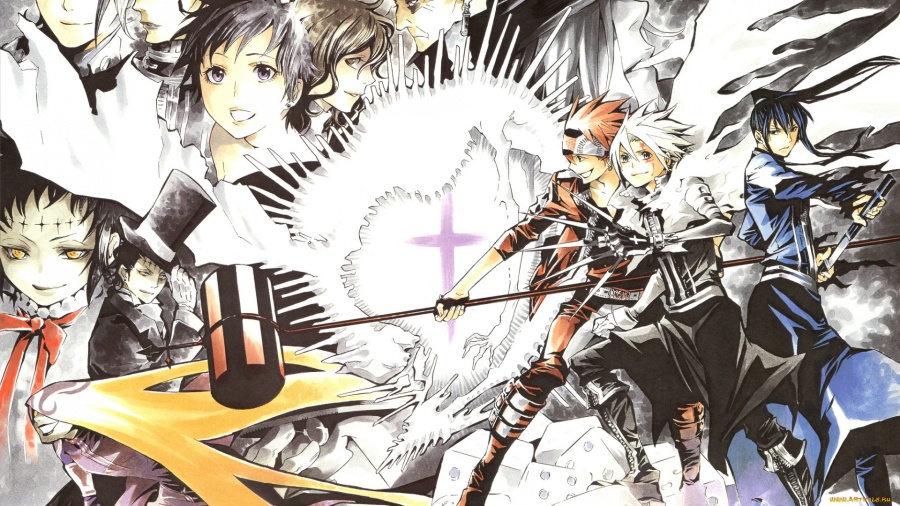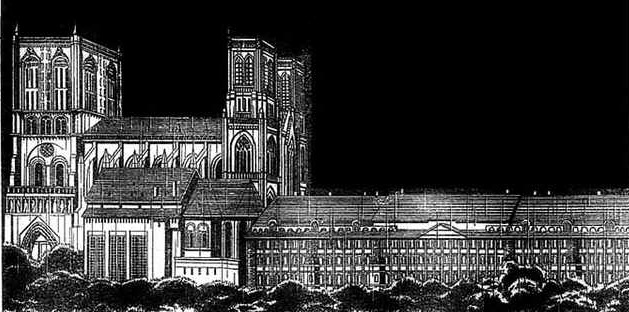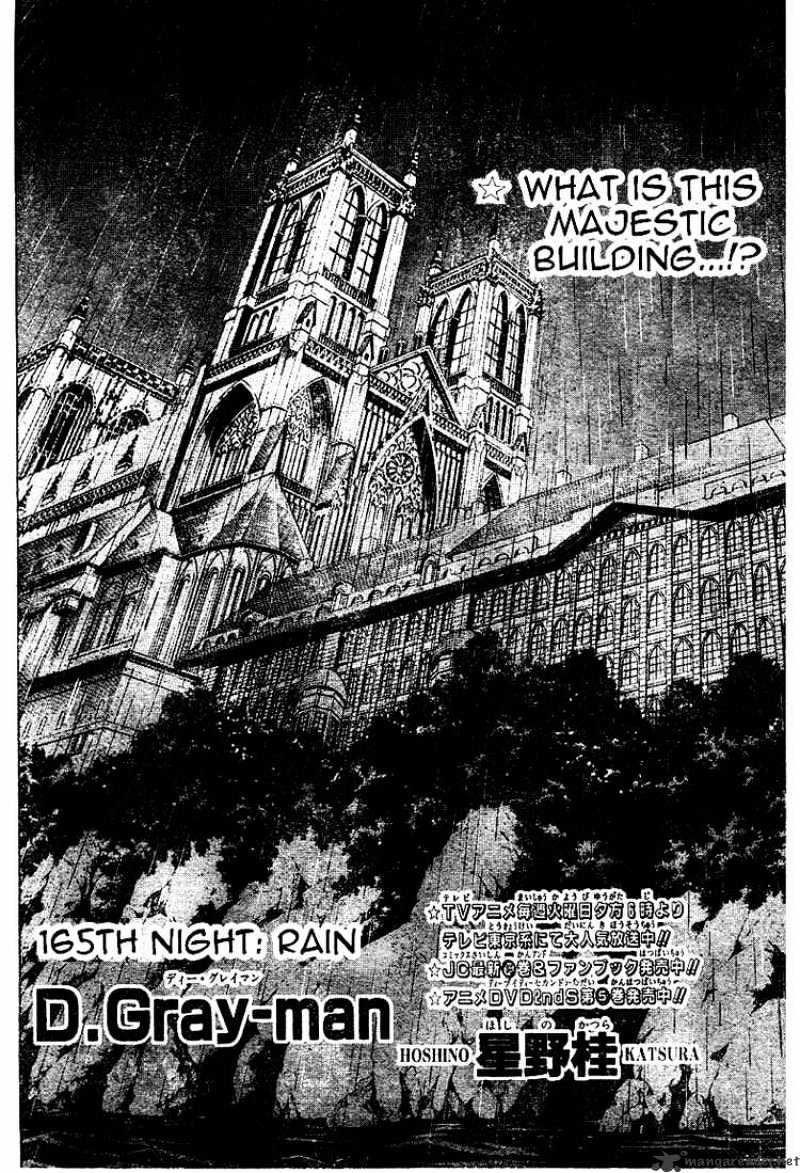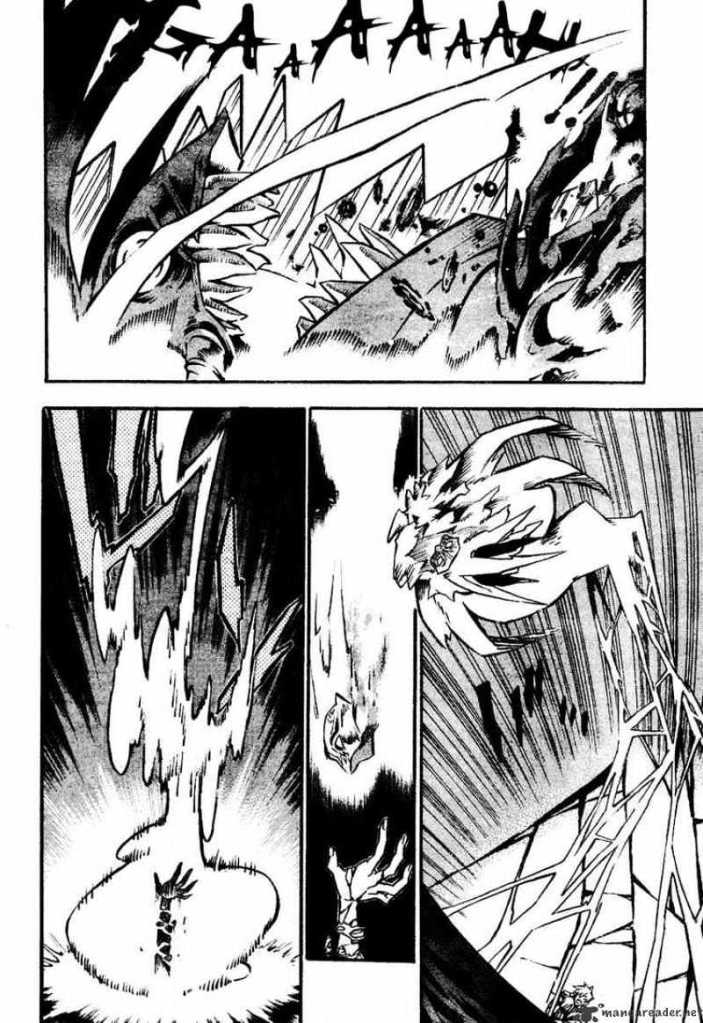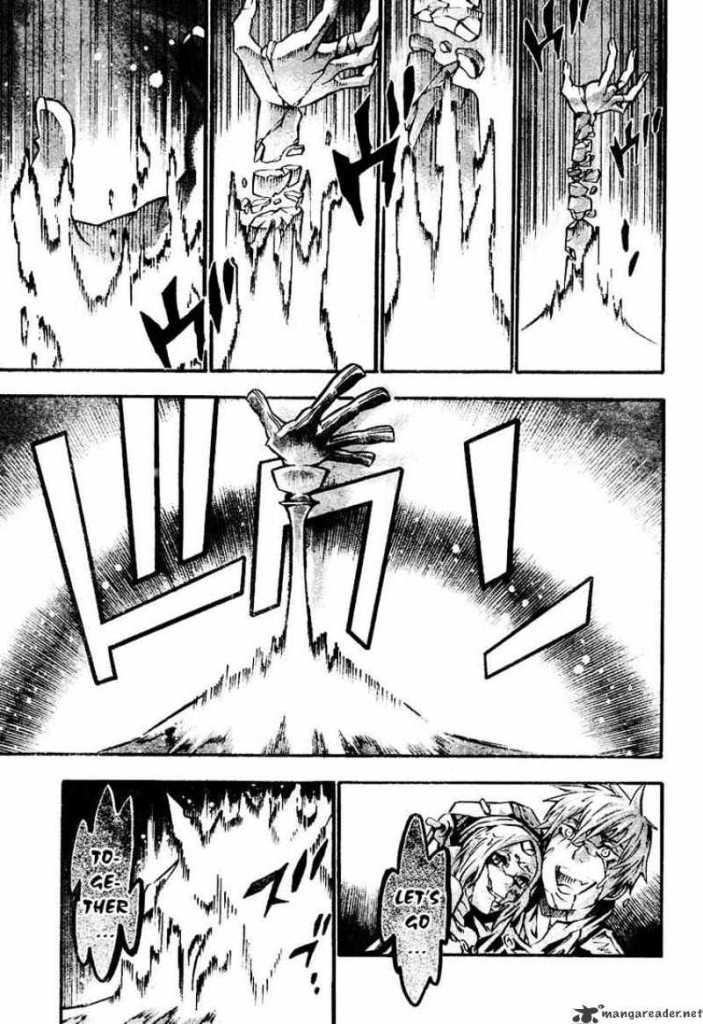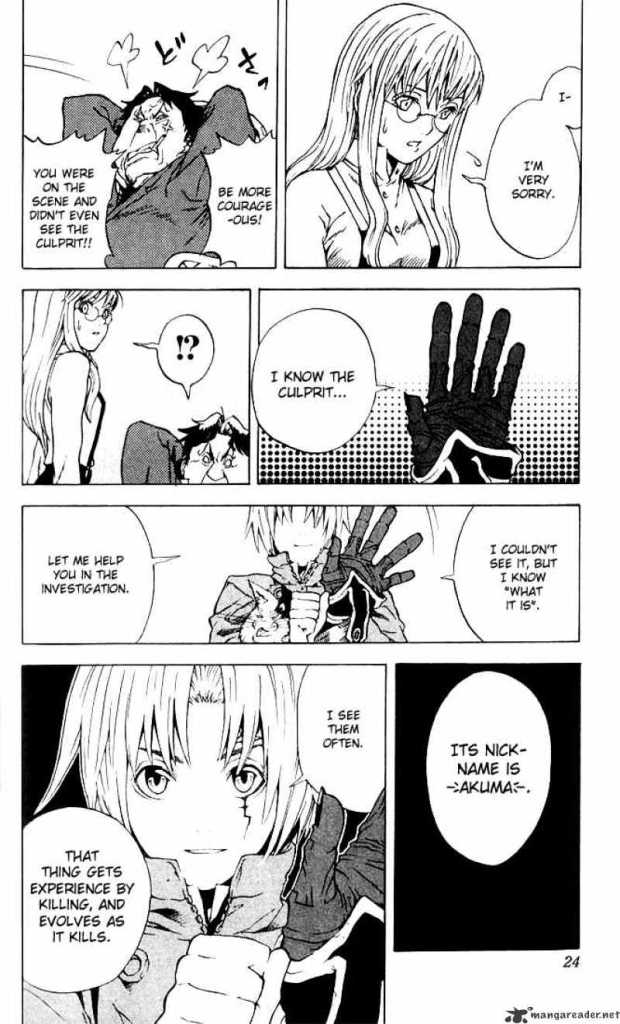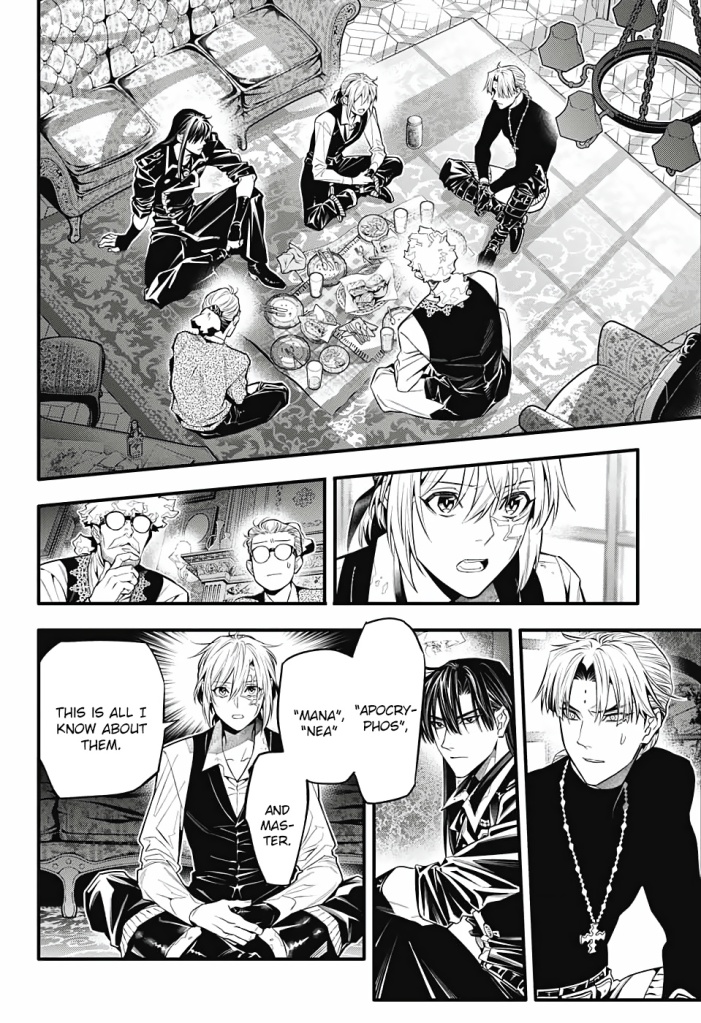D.Gray Man is probably my favorite manga, and one of the manga I believe to be the most underrated in the West. A lot of this is due to a major hiatuses that manga had been forced to take due to author’s bad health. Manga is written and drawn by Katsura Hoshino, and is heavily based upon the author’s earlier work, the one-shot manga Zone (much like One Piece grew out of the Romance Dawn). Yet it would probably not be wrong to consider it the greatest shounen manga ever. It should probably be noted that Hoshino also created designs for Valvrave the Liberator.
Basic premise of the story is that in a world full of sorrow, Millenium Earl – who is essentially the Devil and probably one of most terrifying antagonists in any manga – allows grieving, despairing individuals to sign a “pact with the devil” in order to revive their loved ones. But this is not actually resurrection: soul of the deceased is called into a metalic skeleton, the akuma (Japanese for a “demon”), which is then used to imprison the soul and use it as a fuel. Akuma then murders the person who called the soul back, and wears its corpse as a disguise until evolving from Level 0 into Level 1.
In essence, Akuma is made of three things: tragedy, despair and hatred, and all these things also very well represent the Earl himself. A person who has experienced tragedy may give into despair, which then leads to them hating God for “causing” the tragedy. And it is in that moment that the Earl appears and offers his contract.
Evolution of the akuma is driven by soul’s permanent suffering inside the akuma, which itself is driven not just by the unnatural state of the soul but also by the murders the akuma carries out. The more people akuma kills the more the soul inside is degraded, and this degradation then fuels evolution of the akuma itself: an unnatural dichotomy where body evolves as the soul is degraded. Evolution happens through stages, called levels. These levels rise in order of 0 > 1 > 1,5 > 2 > 3 > 3,5 > 4. Level 4 is highest level likely because number four symbolizes death in Japan. As an akuma evolves, it becomes more human-like. Whereas level 1 is simply a ball with guns, level 2 Akuma tend to be animalistic, level 3 akuma are walking armors and level 4 akuma is essentially a murder cherub straight out of the uncanny valley.
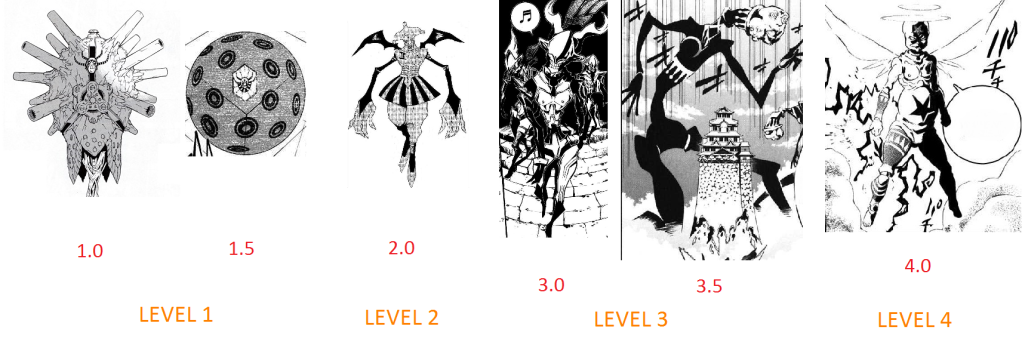
Akuma themselves are weapons controlled by the Millenium Earl, and used for goal that is unknown beyond murdering as many people as possible. And these murders are on a massive scale, considering that a single akuma has to kill dozens of people to evolve a single level and how hundreds or not thousands of akuma are required to form a single Level 3,5. And this then has to murder more people in order to birth a Level 4 which is powered by an amalgamation of hundreds of degraded souls.
Normal weapons are ineffective against the akuma. Instead, the only way to destroy the akuma – and save the souls trapped and tortured inside them – is through the Innocence, a holy crystal sent by God and wielded by individuals known as the Exorcists. Exorcists work for the Black Order, a secret organization founded by the Catholic Church to protect the world after a prophecy had been found that the Earl will destroy the world. Innocence chooses its wielder and essentially personalizes itself to the exorcist it chooses, resulting in very different weapons that fit the personality and nature of the wielder.
The main character, Allen Walker, is an exorcist who got cursed by his father after turning the latter into an Akuma. As a result of the curse, he has gained the ability to see the souls of the Akuma, allowing him to spot the Akuma even in their human disguise. And that sight is terrible, which means that saving akuma souls from their torment is a major part of Allen’s motivation as an exorcist. This is a minute difference compared to other exorcists, but one that will have massive consequences later in the story.
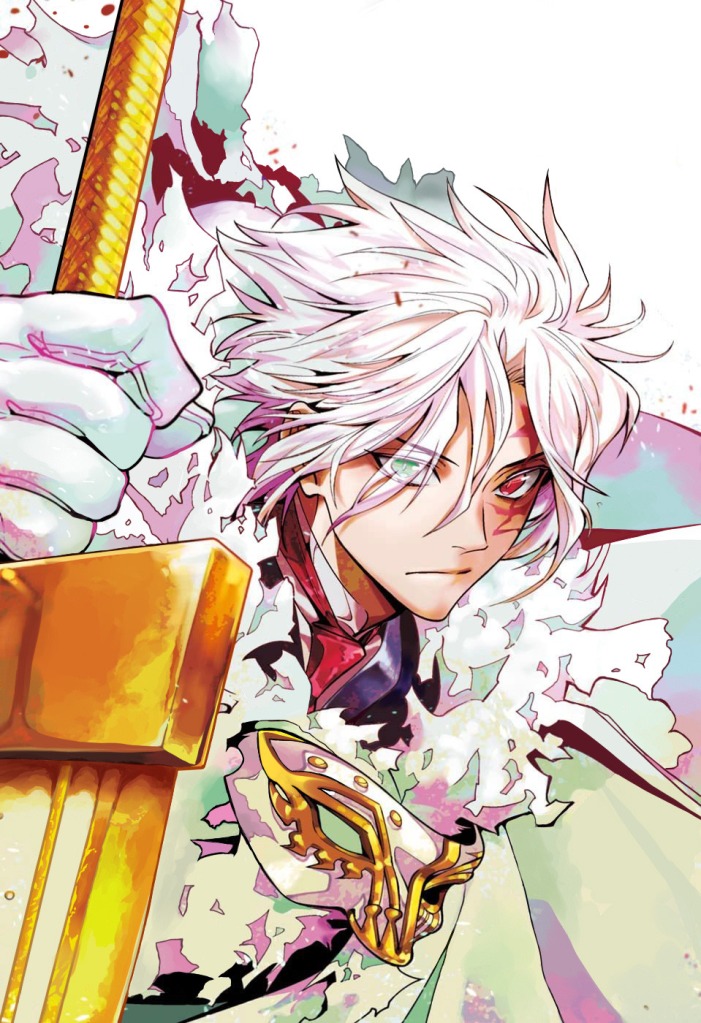
Darkness is even deeper because the Earl and the Akuma are far from the only evil present in the series. Indeed, humans are capable of doing some rather messed up things, be it in the name of survival, winning the war, or simply profit. Some will even outright assist the Earl in his campaign of exterminating the humanity. Even the good guys of the series are not necessarily all that good.
As can be seen from the above, D.Gray Man is a fair bit darker than your typical battle shonen despite the occasional comedic relief moment. One could easily describe it as a cross between battle shounen, seinen and gothic horror. Yet the manga resists the temptation of becoming grimdark, of introducing darkness simply for the sake of darkness.
Early chapters are not heavy on battles and war as they are spent mostly worldbuilding – first seven chapters serve as basically an extended introduction – while later chapters of the manga are mostly centered on personal drama and thus do not really fit the battle manga. Essentially, the manga goes from being a battle shonen in earlier chapters to the gothic horror and psychological horror in later ones. Yet horror overtones are present from the start, from the very nature of the akuma, to the Millenium Earl in all his creepy gentleman glory. What is more, the environment, the setting itself reinforces these gothic horror elements from the very beginning. The first time readers see an akuma, and what they do, it happens in an abandoned church in a village. Black Order headquarters are located in a creepy tower that seems similar to the tower in Pisa, and later are moved to what is basically a Gothic cathedral on an island. Fights often take place in dark locales with few or no other humans around, and even many of the Exorcists would not be out of place in a gothic horror setting. And readers get to see many different locales and environments as the series naturally progresses, taking characters to various places with it. While world at first seems similar to our own, the veil is very gradually lifted, revealing world very different from real one.
Series is notable in part for its very sporadic use of classic shounen tropes – and when it does use them, other elements in the series keep the formula fresh.
D.Gray Man is also a mystery story, and Allen Walker himself is the greatest mystery of all. But it is a mystery with many layers, and even though main mystery is about Allen, it still involves many people, tying them together. There are in fact multiple mysteries in the plot – Allen’s history, nature of the Akuma, nature, history and goals of the Earl and the Noahs, history and goals of the Black Order and so on – and all of them are interconnected and tied together in a web. As the answers are slowly uncovered, they fundamentally change the nature of the story. Plot twists in D.Gray Man are far crazier but also far better handled than probably the plot twists even in Attack on Titan.
Allen Walker himself is likely the best protagonist in the battle shonen, or even manga in general. He avoids the common failing of “idiot protagonist” that plague even the protagonists of much more popular shonen manga. He is neither naive nor weak, and he is in fact world-wise and crafty in a way that other protagonists such as Natsu, Midoriya or many others are not.
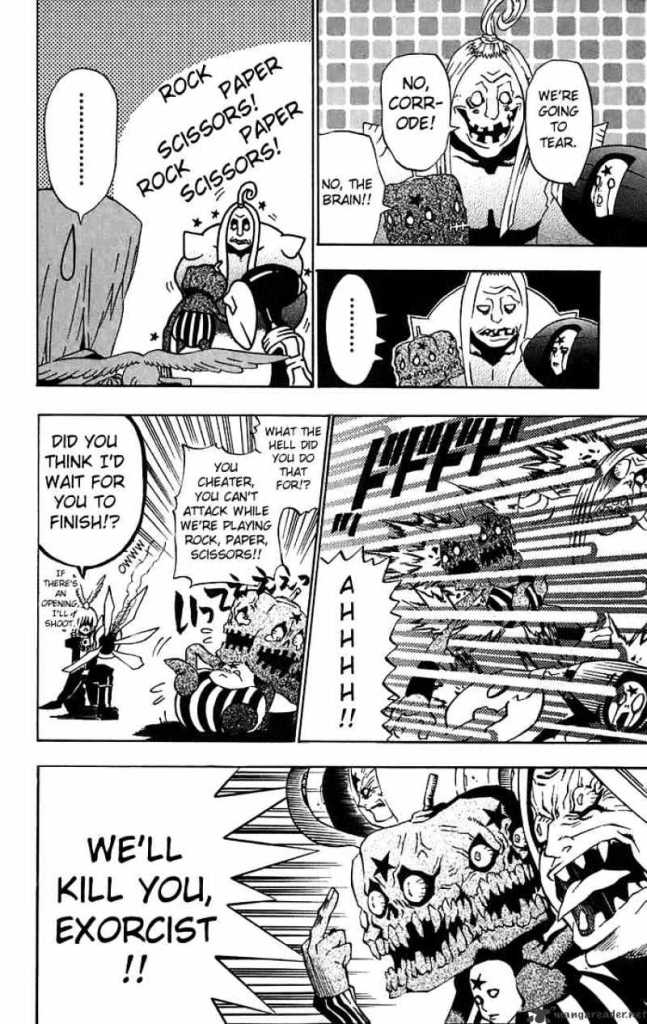
While he gets stronger through the series, he never becomes the strongest character nor does he start overpowering or negating contributions of other characters, thus providing more room for building relationships. And especially in the latter parts of the series, focus is on Allen’s internal struggles, on inner conflicts as a person rather than just gaining more power.
Allen is a very kind-hearted person, and this does in fact lead to moments of naivete. Allen is also very honorable and prideful. He will put himself in danger to save not only friends but even enemies. And unlike so many other manga, these moments can lead to very bad outcomes, and other characters rightfully call him out on his more bone-headed decisions. In fact, Allen’s propensity for self-sacrifice is treated as a character flaw it is, and not something that makes him a saint worthy of worship.
Yet Allen is also a trickster and a liar while still being kind, and is not above cheating to protect himself or his friends. And he is such a liar that he hides his true self not just from his friends but even from the readers. Initially, he appears as a relatively simple and straightforward protagonist, being very naive and open to the people, wearing his heart on the sleeve and emotions on a platter. He seems to be passive, but as his evolved Innocence will show – he is in fact a clown playing a part in the play. He is also a massive hypocrite, sacrificing himself for those he cares about but refusing to let others do it for him. Yet on occasion, and increasingly so as the later chapters progress, his real self will shine through the reassuring mask he puts forth. And we eventually realize that he wears the mask in part to honor Mana, his adoptive father and person who had adopted and raised him when he had nobody. In fact, this can be seen even simply by Allen’s eyes, which grow clearer and more expressive as the manga progresses – in the first chapters, Allen’s eyes were only clear when he was destroying the akuma. But later, Allen’s eyes are more consistently clear – and not by accident, that is also the time when he starts to more consistently drop his mask. Allen’s speech becomes rougher and he becomes more open with his emotions, more ready to truly trust his friends, but also to take action that is also for his own sake and not only for the other people. Yet at the same time, his smile becomes even more fake in face of the increasing adversity he is facing.
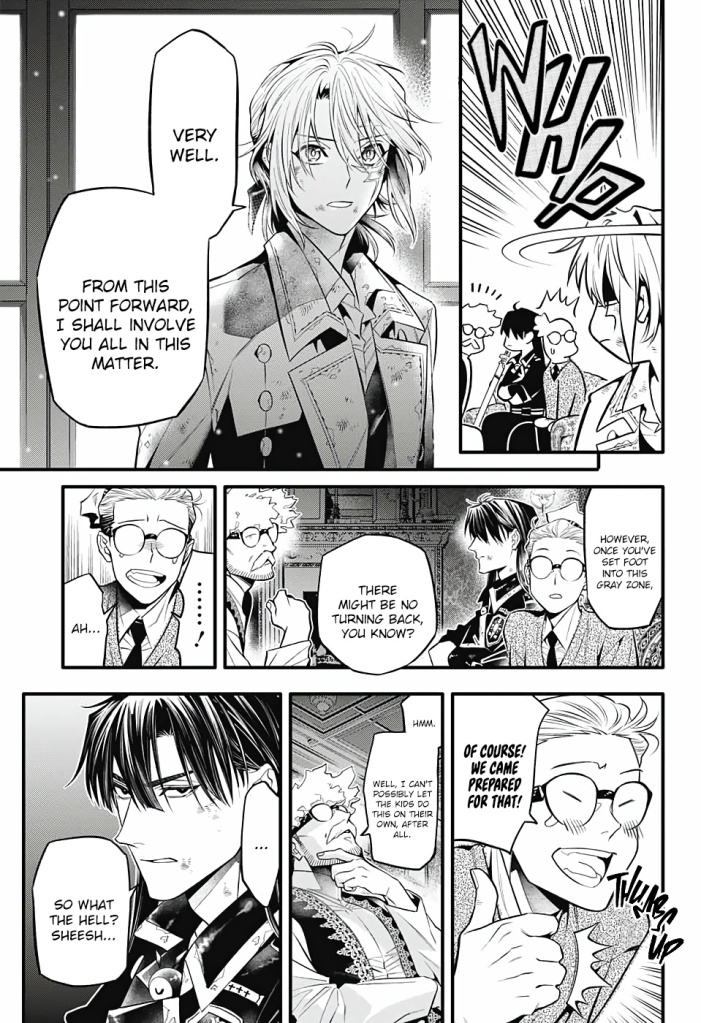
In fact, Allen’s personality and behavior in the beginning, the middle and near the (still not reached) end of the story can feel like three completely different characters. His interactions with Cross and Kanda are important as they pull out the “real” Allen – person we only see then and nowhere else. In fact, even the child Allen which we see later in flashback already wears a mask, acting like a brat to reject the people while still occasionally showing a caring side. And still, the need to help people and the loneliness, need to handle things on his own due to his independence stay the same throughout.
And lastly, while Allen is a child of a prophecy, he is a twist on the trope. He is not destined to save the world, but rather to disappear, condemned to destruction for other people’s sake. Allen is not special – as noted, he is not the strongest character in the series, not even close, and will likely never become such. One power that does make him special, the ability to see the souls of the akuma, is a literal curse which condemns him to seeing the torment of the damned souls – a literal stuff of nightmares that makes other people throw up when they see them by accident. Many of the actions he takes are not his own choice but are forced onto him, and some things surrounding him he does not even realize until late in the story. While he is the main character of the story, he has less freedom and choice in his life and actions than most of the more minor characters. In fact, he basically has no freedom: he is caught in a spider’s web, with most choices having been made for him long time ago.
Allen Walker faces the adversity that is more personal and real than that of nearly any other manga protagonist – being shunned by a village or bullied for not having superpowers hardly compare to one’s entire being being erased. Allen even questions his right to live, to exist, as the person destroying him is possibly the only chance humanity has of defeating the Earl. But his main theme is loneliness – even when he finally gains friends, circumstances still place him apart from them, building a wall that is as real as it is invisible.
Other characters are no pushovers either. Each character – even minor ones – has a distinct design and personality, and feels alive. And this is rather amazing considering how many characters there are. Only really long-running series such as One Piece can really claim to have larger number of developed characters than D.Gray Man. Aside from Allen and the Millenium Earl, there is the Noah family – twelve followers of the Earl, other Exorcists (around two dozen), scientists (another two dozen), around a dozen individual Akuma with personalities, and many others. And all of them have at least a hint of personality, with many being developed into considerable depth considering the relatively limited amount of available “screentime”.
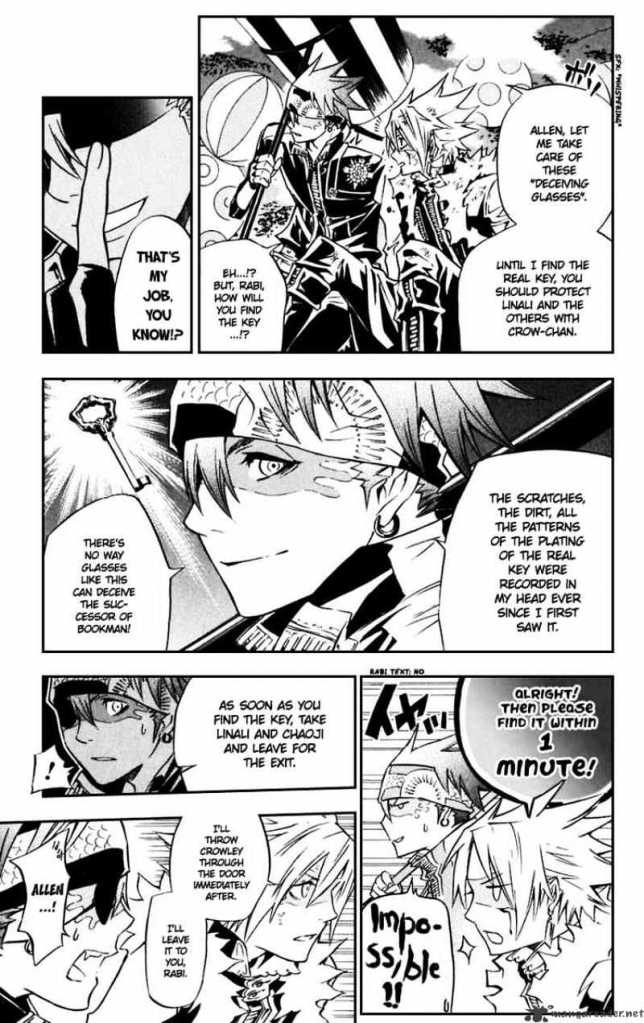
That being said, story is largely centered around Allen and several other major characters: namely, Kanda, Lenalee and Lavi, who serve as something of his immediate support group. Lavi is my personal favorite, and is also rather popular in the fandom. Lavi is in fact very similar to Allen in many ways that are not so obvious at the start. Much like Allen, he wears a mask of his own – in Lavi’s case, of a goofy, kindhearted yet somewhat absentminded prankster. But much like Allen and basically all characters, Lavi starts off as a stereotype but gradually evolves into a very deep character. At first, Lavi is a mask: his appearance as a friendly prankster is actually a cover for a detached, emotionless and analytical Bookman personality. Yet through his character development he ends up embracing the mask as his actual personality. Kanda on the other hand is introduced as a very detached and emotionless character, cold, stoic and arrogant, willing to do anything to achieve the mission objective – even leaving his allies to die. This causes major friction with Allen from the very start, as both of them are in fact wearing masks to hide the broken reality underneath, and their relative masks couldn’t be more different. Allen will save people even at the cost of his own health, whereas for Kanda, mission comes first. But Kanda too gains a lot of depth through the series, eventually even learning how to open to others. Last of the main group is Lenalee, who is very similar to Allen, at least externally. She sees people around her as her family, but because of her traumatic backstory she is also very quick-tempered.
These friendships are extremely important to both Allen himself and to the story. Allen’s struggles, while the center of the story, are not the only ones that matter. Kanda, Lenalee and Lavi all have their own struggles and adversities to overcome. And rather than isolating them, these struggles bring all four protagonists closer together as they help each other at various points.
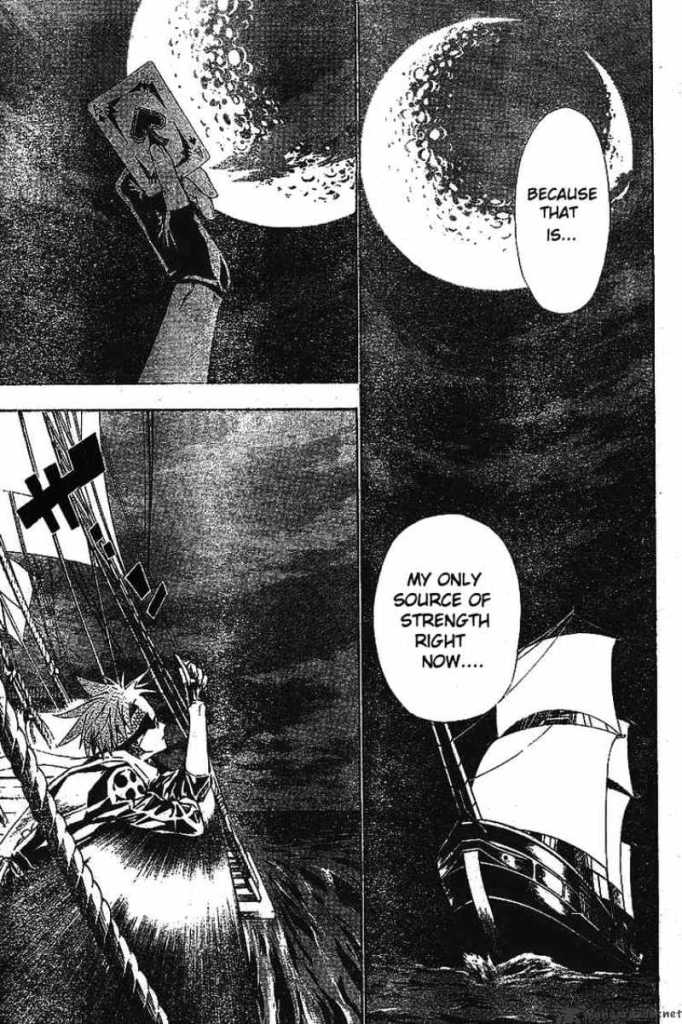
Even side characters are given characterization and easy to get emotionally connected to, making them easy to remember even if they have been around for merely a single chapter. And because of this, every time a character dies it feels like a loss even if character himself or somewhat irrelevant to the story at large.
Antagonists themselves are also given extensive characterization. The primary antagonist is the Millenium Earl, who is essentially a devil in a Halloween costume. He is drawn to grief, and when a person grieves too much for a lost one, the Earl offers them to revive the loved one. As already explained, this is a fake promise that always leads to death. Yet the Earl himself is far more than just a plot device or an absent antagonist. He is a person, and while I will not explain anything in detail here to avoid any more spoilers, there is far more to the Earl than meets the eye. Earl himself is assisted by a group of essentially anti-Apostles called the Noah clan. They are basically based on the story of Noah’s Flood, which in this world may have been a warped legend of an actual conflict between God’s Apostles and the Millenium Earl that destroyed the world. Noah Clan are survivors of this flood, where Noah apparently survived but passed his grudge against God onto his descendants, the Noah Clan. The oldest Noah is the Road Kamelot, who is the Noah of Dreams – and this is significant because dreams play a massive role in the story. Road ends up developing a crush on Allen, which is another element that will have major payoff down the line. And because Noahs are technically human, Allen – whose goal is to save the Akuma and the humans – ends up having issues as his goals relative to Noahs end up diverging from those of other exorcists that want to simply eliminate the Noahs.
And unlike many other manga where characters will win through cheap or undeserved powerups, or something contrived will happen to help them win… in D.Gray Man, they don’t. Whereas in One Piece, Luffy may lose against the same opponent multiple times in row yet survive to try again and then win, or Fairy Tail where random powerups are a rule, in D.Gray Man it is not unusual for protagonists to actually loose. This usually does not result in death – number of exorcists is limited and so characters cannot be killed off randomly – but consequences are nonetheless significant. Even when characters do get powerups, these powerups are well-earned, and characters go through hell and back for them. Allen loses his arm, and nearly has it broken a second time, before achieving the true form of his Innocence. And this is only achieved through dedicated training regimen, not a five-second powerup. Lenalee and Kanda likewise nearly lose their Innocence before gaining it back, now improved and more powerful.
Lastly, the artstyle. While D.Gray man has had – due to Hoshino’s bad health – ups and downs in terms of art, when it is at its best it is probably one of if not the best drawn manga out there. Art in latest chapters is significantly superior to the likes of One Piece or Berserk, and is comparable to that of Planetes and All You Need is Kill. Even when being average, art is still outstanding compared to most manga. It is somewhat unique, and is excellent at delivering not just the story, but emotions as well. Background and setting design are not merely a background to the story but are actively a part of it, and deliver unique feeling to the story itself. Characters themselves are excellently designed, with good proportions and consistent relative sizes – something that is actually strangely difficult to achieve in a manga. Uniform and setting designs, coloring, even hair design – all of that is extremely well done and very deeply thought out. It is in fact so good that it has inspired many others to become artists as well.
While the series starts out as a fairly standard manga in terms of basic art, as it progresses the artstyle becomes more detailed and also more obviously gothic even in its fundamentals. Character designs both within manga and on the volume covers over time became more detailed, with thinner lines and more shading. Art in general becomes far more detailed and subtle, with shading, lining and exploration of line thicknesses used to convey emotions and atmosphere to maximum effect.
But possibly the greatest strength of the D.Gray Man’s art – even if not obvious – is its emotiveness. Subtle differences in facial expressions, shading and setup are used to convey emotions. These emotions can be very deep but also show very subtle differences that could not be expressed in speech. And indeed they are not: Hoshino very rarely has characters vocalize how they feel, with emotions being expressed primarily though the art.
When it comes to “manga vs anime”, original 2006 anime may actually be a better choice if one wants to keep it within a single medium as the so-called “filler episodes” are not really “filler” in classical sense. Rather, they were in fact based on the light novels. Of course, one might also prefer to simply read both the manga and the light novels. The D.Gray-Man Hallows anime however is a clearly inferior choice to the manga for anybody wanting a full experience, as it does away with some of the filler arcs such as the crazy zombies arc. And of course, both anime have fallen way behind the manga: original 2006 anime stops at chapter 158 (episode 103 of the anime), while Hallow does not adapt the “Saying Goodbye to A.W” arc. Hallow specifically has some major downsides: art style is different and in my opinion inferior to the original anime, and voice acting is objectively inferior to the original. I certainly cannot say that I have been returning to the Hallow the way I had rewatched the 2006 anime time and again. In fact, I watched the original perhaps half a dozen times if not more, but for Hallow, once was more than enough. But even the original anime, and especially so the Hallow, cannot compare to manga in some of the most important aspects such as the ability to convey emotions. Necessity of animated medium simply does not allow for subtleties of the manga, and Hallow is especially badly hit by this as its own art is inferior to the original anime while at the same time manga has become far more detailed and expressive compared to the earliest chapters.
